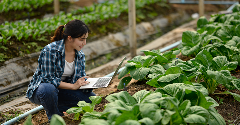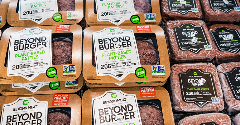News
Savoury snacks to grow 7.9%
16 Sep 2016The global savoury snacks market will rise from US$94.5 billion in 2015 to US$138.2.billion by 2020, representing a compound annual growth rate (CAGR) of 7.9%, according to consumer insight firm Canadean.

The global savoury snacks market will rise from US$94.5 billion in 2015 to US$138.2.billion by 2020, representing a compound annual growth rate (CAGR) of 7.9%, according to consumer insight firm Canadean.
The company’s latest report states that such growth is expected to come mainly from developing countries in the Asia-Pacific and Eastern European regions, with CAGRs of 13.7% and 7.3%, respectively, while the Latin American region is expected to register a more moderate CAGR of 3.2%. “Rising urbanization levels and busier lifestyles are impacting the eating habits of consumers, who are increasingly replacing main meals with more flexible, light, and convenient snacking options,” said According to Rashmi Mahajan, Analyst for Canadean. “Changing consumer preferences and the growing trend of ‘snackification’, which represents a significant portion of everyday eating routines, is driving the demand for portable and on-the-go formats.”Big opportunities exist in large, populous developing countries with low per capita consumption levels, Canadean says, such as China (0.8 kg of savoury snacks per person in 2015) and India (1 kg), compared to the high levels of consumption in developed countries such as the US (9.5 kg) and the UK (7 kg).Canadean’s analysis reveals that the health and wellness trend has impacted the eating habits of consumers in developed markets, who tend to base their snacking choices on nutritional value and quality. In this way, consumers are trading up and spending more on premium varieties of snacks. Consumers in emerging countries including Brazil, China and India, on the other hand, mostly base their snack choices on value and experimentation.“Despite the regional differences in snacks consumption, innovation in flavors remains an important differentiating factor globally, as consumers across all ages opt for products offering new and unusual consumption experiences,” said Mahajan. “Examples include nacho chips in papdi chaat flavor in India, maize snacks in a tangy fruit chutney flavour in South Africa, popcorn in strawberry and cream flavour in the UK, and potato chips in chocolate chilli flavour in France.”According to Canadean, the global savoury snacks market is highly fragmented, with the top five brands holding less than 16% market share. Lay’s, Doritos, Pringles, Cheetos, and Ruffles were the leading brands with the highest market share in 2015.Related news

Digital platform can help optimise the protein quality of plant-based meals
29 Dec 2025
Researchers at Wageningen University have developed a metric to assess – and optimise – the protein quality of plant-based meals.
Read more
Debate over ban on ‘meaty’ names for plant-based products reaches stalemate
26 Dec 2025
The debate over a ban on plant-based products using “meaty” terms has reached a stalemate, leaving manufacturers in limbo and still facing overhauls to their marketing and packaging.
Read more
Our most-read articles of 2025
23 Dec 2025
From trade tariffs to heavy metals in protein, we look back at some of the industry’s highlights of 2025 and round up our most-read stories of the year.
Read more
Bigging up bean-based products and consumption in Britain
19 Dec 2025
Non-profit organisation the Food Foundation has launched a campaign, “Bang in Some Beans”, designed to increase UK consumers’ legume consumption.
Read more
Pioneers of circular plastic packaging push for new policies
18 Dec 2025
Some of the world’s largest food and drink companies have grown frustrated at investing in circular packaging systems, as the majority “wait on the sidelines”.
Read more
Which sustainability-related labels are consumers willing to pay a premium for?
10 Dec 2025
Products with animal welfare and geographic origin labels elicit a higher willingness to pay a premium than those with carbon-related labels, research suggests.
Read more
Sorghum emerges as better-for-you hero ingredient
9 Dec 2025
With the launch of Novak Djokovic’s sorghum-based brand, the grain’s popularity in the better-for-you snacking sphere is on the rise, thanks to its nutritional and sensory properties.
Read more
Innovation promise in 'maturing' plant-based dairy alternatives market
8 Dec 2025
Plant-based dairy is a maturing market that still faces significant hurdles around taste, functionality, nutrition, and price, but industry is innovating fast, according to experts speaking at Fi Europe.
Read more
Celebrating the winners of the Fi Europe Innovation Awards 2025
3 Dec 2025
Food industry stakeholders celebrated as the winners of the Fi Europe Innovation Awards were announced at a ceremony in Paris.
Read more
Yuka’s food scanning app helps consumers make healthier choices
2 Dec 2025
Global food scanning app Yuka helps consumers understand the content of their shopping baskets and shapes producers’ reformulation plans.
Read more